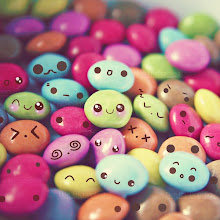WHAT IS MEDICINE...???
Chemicals that are used for medical purposes are called
medicine.
For your information there are two type of medicine.. let us tell you what they are..
There are :
- Traditional medicine
- Modern medicine
What special bout this medicine is..they are n0t chemically processed.
Let me sh0w you s0me examples 0n this kind of medicine with their functi0ns and als0 their c0mm0n uses in 0ur daily life..
AL0E VERA or LIDAH BUAYA
Functi0ns
- to heals wounds & skin deseases
- to treat diabetes, asthma & sunburn
How it is used..?
- the leaf is used to produced juice and taken orally or rubbed on body
GINSENG
Functi0ns
- to boost the immune system
- able to improve the health of people recovering from illness
How it is used..?
- the root is dried and used to make tablets, capsules and powder
EURYCOMS LONGIFOLIA or TONGKAT ALI
Functi0ns
- to increase the male libido
How it is used..?
- made into tablets or capsules
Here s0me m0re examples on traditional medicine...
[beverage]
[liquid / k0rdial]
[tablet]
Now.. let us find 0ut bout this kind of medern medicine...
Most of modern medicine are synthesised by scientist. These medicine include analgesics, antibiotics,
and physchotherapeutic medicines.
Analgesics
- Analgesics commonly known as painkiller.
- This kind of medicine, do not treat the cause of pain but just to relieve pain without
causing numbness or affecting consciousness.
There are some examples of analgesics with their side effect :
ASPIRIN
side effect : increase bleeding especially the pregnant woman.
PARACETAMOL
side effect : causes blood disorders, skin rashes and swollen pancrease.
Antibiotics
- Antibiotics are used to treat infections caused by bacteria but not to cure infections caused by
viruses such as flu and cold.
- there are some example of antibiotics with their side effect :
PENICILLIN
side effect : cause allergic reaction, diarrhoe & difficulty breathing.
Physchotherapeutic
- this kind of medicine are used to alter abnormal thinking, feelings or behaviours
- there are some example on this medicine :
BARBITURATES
side effect : causes addiction, dizzines & increase dreaming.
ANTIPSYCHOTIC MEDICINES
side effect : causes drowsinnes, rapid heartbeat & dizziness.
Thats all !! Now let us describe bout the correct usage of modern medicine..
- actually, modern medicines should be taken under the doctor's prescription and supervision.
- some are simply unable to tolerate the modern medicines prescribed. Instead of stop taking the medicines,
one should work together with doctor to find way to reduce the side effects.
- HUSNINA & RAWEYAH -

 ...DETERGENT ADDITIVES...
...DETERGENT ADDITIVES...







.jpg)























